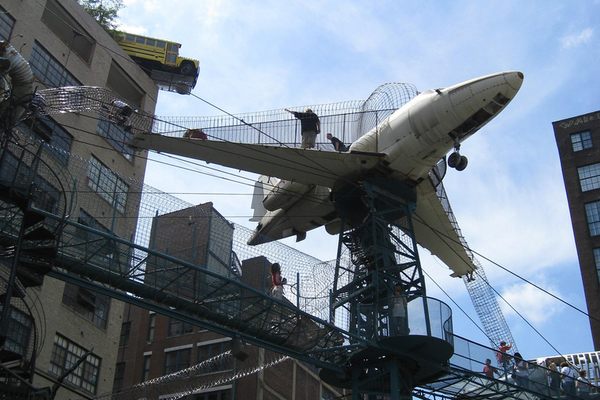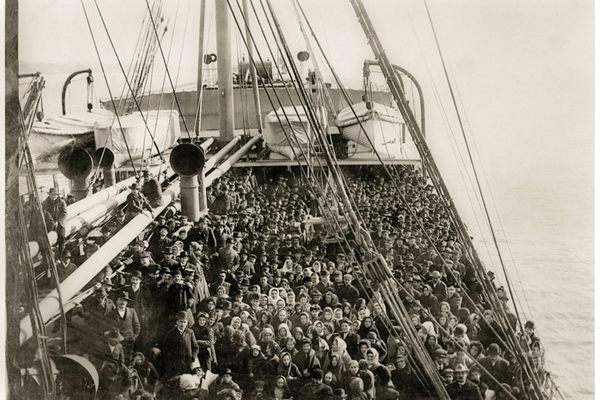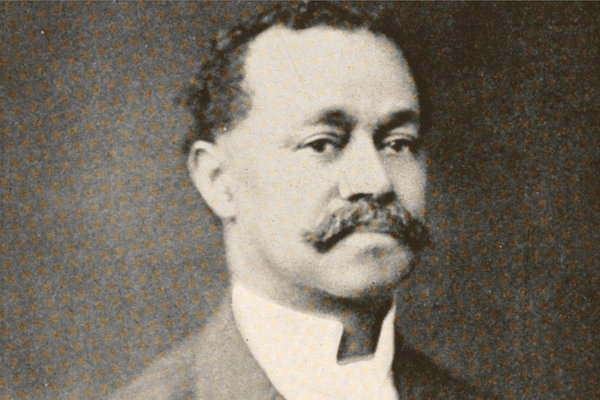How a St. Louis Church Became a Skate Park
Welcome to heaven on earth for skaters.

Skateboarding has long relied on the presence of empty space. When the counterculture kids of California first started occupying kidney bean-shaped, water-less swimming pools found in residential backyards under construction, skaters became known as a community of people who could reimagine abandoned architecture into places of utility. Skaters are known to revamp their worn boards by applying a smattering of skate stickers to their undersides; similarly, skate communities around the world have implemented a similar process to converting old spaces into new parks.
While the omnipresence of vacant pools is particular to the Golden State, other forms of architecture are being repurposed elsewhere around the United States. In St. Louis, Missouri, one church has been converted into a private skate park, providing a sanctuary for skaters in the Midwestern city.


St. Liborius was established as a German national parish in 1856, and construction of the church was completed in 1889. This large Gothic Revival building, marked by its pointed arches and thin, vein-like pillars, went through several transformations to reach its current form. Over the years, St. Liborius gained a clergy house and a convent, and merged with nearby parishes due to a dwindling number of Catholics in the neighborhood. Before its official closing in 1992, St. Liborius was declared a City Landmark in 1975 and recognized as a National Historic Place four years later. Today, it exists as a shell of a church, where the stained glass windows shine vibrant light on skate ramps instead of pews. Its new name is Sk8 Liborius.
This indoor skate park, with fresh graffiti at its altar, is a privately owned space that members of Sk8 Liborius’ community can access. Public skate sessions are offered occasionally, though there is no set schedule; when the church does open its doors to curious skaters. Engineers, skateboarders, and extreme BMX riders transformed the 129-year-old cathedral into the maze of adrenaline-boosting slopes it is today. Sk8 Liborius is anchored by a particularly impressive 40-foot miniature ramp in the center, leading right up to where a priest once stood in the pulpit.

In fact, the St. Louis skate community is so dedicated to its chosen activity that a band of local skateboarders started building a DIY skate park beneath the Kingshighway Bridge, sans city permits, in 2009. It was demolished in July 2015, which ended the reign of the city’s only free, public skate park. Sk8 Liborius came in and provided a similar do-it-yourself alternative, mostly thanks to blind faith.
In a 2016 Viceland documentary on Sk8 Liborius, two of the park’s operators discussed the chapel’s transition from abandoned building to skate haven. Apparently, St. Liborius was “pretty destroyed” when they first moved in, and the crew “pulled five roll-out dumpsters full of garbage” out of the space that once held a congregation. “In some ways, it’s really become kind of like a sanctuary for the fringe artists and fringe skaters,” says one of the renovators. St. Liborius’ second life as the resurrected Sk8 Liborius proves that there’s no need for the separation of church and skate.








Follow us on Twitter to get the latest on the world's hidden wonders.
Like us on Facebook to get the latest on the world's hidden wonders.
Follow us on Twitter Like us on Facebook